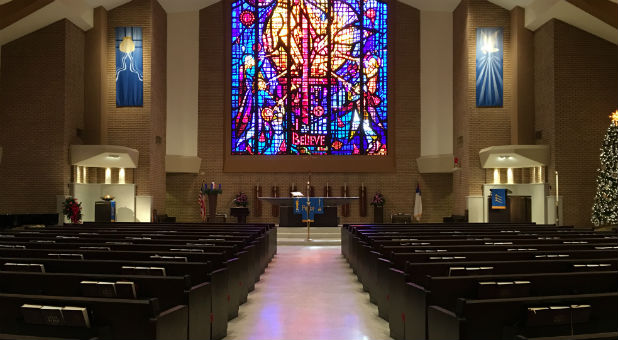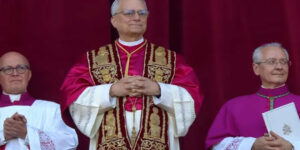5 Earmarks of the Apostolic Paradigm
There has been a movement the past four decades among various segments of the body of Christ towards embracing the way of Jesus and the apostles as found in the first century church. Extensive writing has been done in this regard by Jeff Reed, the founder of BILD International (www.bild.org) who has given his life over to writing about the Pauline model of church multiplication and leadership development. Most recently, Dr. C. Peter Wagner has started a network of leaders who have been launching a movement of apostolic centers in the United States and beyond! Peter has a knack for sensing what is practically needed and then galvanizing a movement around it.
This movement is very necessary since the contemporary and traditional church of the past centuries (perhaps since the second and third centuries) has in some ways lost its sense of being apostolic! Regarding the contemporary church, essentially the focus of the congregation and pastor is only to build up their local congregation and serve their community. If they have a vision for missions they generally will support full-time missionaries that may or may not have had their genesis in their congregation. Furthermore, if a local congregation has a vision to serve beyond their traditional local church functions, they will likely partner with a para-church organization that specializes in marketplace ministry, soul winning or community transformation (often disconnecting extra-local ministry from the discipleship process and life of their congregation).
Generally speaking, the typical contemporary local congregation has no vision beyond the care and concern for their own flock and adding to their membership. Even if a church has an apostolic vision to release five-fold ministers (Eph. 4:11) to serve the greater body of Christ, most of these churches have basically sent out their Set One (senior pastor or bishop) as an apostolic leader. However, the local church often has very little connection with the Set One who was sent out and (consequently) the local church becomes autonomous from outside interference and/or apostolic governance.
The New Testament Model for Apostolic Churches/Centers
As we read the New Testament, we see that every city had one church (that met in many locations in house church congregations) that was led by an apostle who founded this city church. The apostle would nurture and raise up elders and shepherds who would care for the flock (Acts 14:22-23; 15:36; 20:28) and then leave and start other churches and periodically return to make sure they remained true to the faith. Paul the apostle was sent out of the church of Antioch (Acts 13:1-2) and started other churches that he continued to oversee as the founding apostle, even though he was not present.
Thus, the modus operandi of the first century church was as follows: An apostle founded a congregation, stayed long enough to nurture elders, and then the apostle would leave that city to found another citywide movement of congregations, but continue to revisit each of these churches and give them guidance and oversee them, but of course from a macro level.
In summary, though Paul’s ministry didn’t remain in the cities of Ephesus, Colossae, Philippi, Thessalonica and Crete, his governance as the founding apostle continued on through the elders and leaders he set in each church. This clearly demonstrates that in apostolic churches (or centers), ministry location and focus is not necessary for apostolic governance.
Paul left the eldership to deal with the various issues related to the congregation but when it came to the doctrine, teaching and standards of the congregations he had the final say. In Corinth, he even threatened the leaders and congregation and said to them, “What do you desire? Shall I come to you with a rod, or in love and in the spirit of meekness?” (1 Cor. 4:21). He goes on to give orders to put a sexually immoral person out of the church as well as guidelines on who they were able to associate with (1 Cor. 5).
Furthermore, the whole epistle to the Galatians is a doctrinal defense of his apostleship to that city church as well as setting them straight regarding the gospel they were preaching. The epistle to the Ephesians contains commandments on how the church family was expected to function (chapters 4-6). In the epistle to the Philippians, Paul urges the leaders to work together in unity (4:2-3). In 1 Timothy 3 and Titus 1, Paul gives instructions regarding the criteria for elders and deacons. In some instances, Paul would plead with the leaders to do things correctly and in other instances he just gave out apostolic orders and/or commands that were not up for negotiation. Hence, apostolic leadership generally tries to empower the local elders to lead the church and only gets involved in matters regarding breaches of doctrine, ethics, and protocol.
Not only this, but every one of the churches Paul started had a commitment to continue their partnership with Paul as the founder by financially supporting his apostolic ministry (Phil. 1:5, 18-19; 2 Cor. 8:9).
Many of these congregations also supplied people who would serve alongside Paul on his apostolic team (Phil. 1:25-30; 2 Cor. 8:16-24; Rom. 16:1-2).
In summary, the first century apostolic church had the following as a general template:
-A leader was sent out of the city church as an apostle
-The apostle would plant other churches in other cities
-In each church the apostle would leave and plant another church after a strong eldership team was raised up to care for the flock
-These churches had a global apostolic vision by continuing to stay connected to their apostle with financial support, praying regularly for him, supplying co-workers for the apostolic team, and by staying accountable and keeping regular communication with him
-The apostle continued to have governmental rule without ministerial proximity and hands-on leadership.
Apostolic Centers
The present movement of apostolic centers has continued to build upon this first century model as stated above and is attempting to create long-needed change in the way we in the United States typically do church. Some in the movement don’t like to use the word “elders” because they say this word is not mentioned in the New Testament while the founding apostle is present. I think this point is moot since Peter calls himself an elder (1 Pet. 5:1). Hence, even when the founding apostolic team is present in a local church they are all essentially biblical elders. They use the term “centers” rather than churches perhaps to disassociate themselves from the baggage of the present day church. Also, with the restoration of the teaching of the kingdom of God in the present day apostolic reformation, many (apostolic leaders) in this movement have conceptually gone from overseeing an inbred congregation that exists merely to care for itself to having a center replete with kingdom activity that encourages and equips their members and leaders to reach every cultural mountain of society. (I personally continue to use the words “elders” and “churches” because those are the words used by the New Testament writers but calling an influential congregation a “center” may be a wise move in various contexts.)
Furthermore, I am excited about this new development since our local church, Resurrection Church of New York, has always called itself an apostolic church. Our church has had major influence in our Sunset Park community of about 180,000 in Brooklyn, and has modeled the apostolic church of the New Testament since we founded it in 1984. For the past two decades, we have had all five of the ministry gifts functioning among our leadership, and we have been an equipping center that has sent out numerous church leaders and nurtured influential marketplace leaders that have served our region and beyond! Also, as part of the apostolic cycle mentioned above, I have launched out apostolically to the nations while still remaining as the apostolic overseer. Since 1990, I have been able to function apostolically to our city and now to numerous cities because we have had a strong leadership team in place that cared for our congregation without losing our kingdom focus!
Finally, the Reformation that started in 1517 with Martin Luther continues on as the reformed church continues to reform itself!






































